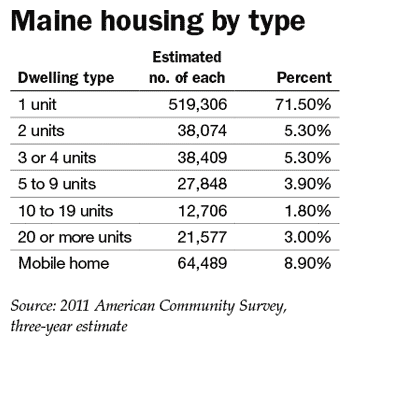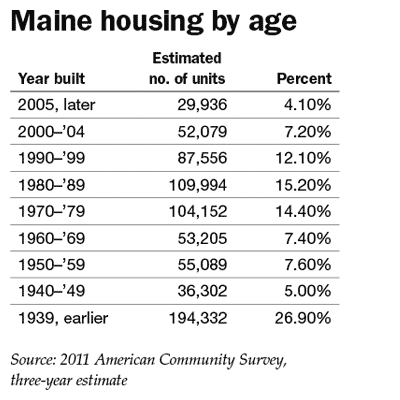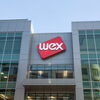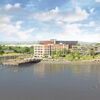New incentives target multi-family building improvements
A state incentive program launched in August is enticing owners of mid-size multi-family buildings to reduce their energy costs by at least 20%.
The new Efficiency Maine program opens up retrofit incentives to multi-family buildings with five to 20 units — a category of housing that previously did not qualify for incentives.
To receive money from the $3.4 million fund, owners of buildings with five to 20 units must have an auditor outline a plan to reduce a building's total energy consumption, measured in kilowatts and therms, by 20%.
Given the age of Maine's housing stock, energy consultant Andrew Calise says that's not often a problem with multi-family units.
"It's rare that you would find there's nothing to be done," says Calise, the principal of the Portland-based Strategic Energy Group.
Just over one quarter of Maine's 722,645 housing units were built before 1939, according to the most recent census data.
Building age is one reason for high retrofit potential but another is that until this year, mid-size multi-family buildings — of which Efficiency Maine estimates there are around 53,000 in the state — had no access to incentive programs similar to those available for individual homeowners or commercial buildings.
"This particular type of building was just not taken care of," says Rick Meinking, Efficiency Maine's business program manager.
The program's incentives can deliver up to $1,400 per unit or 50% of the retrofit costs — whichever is less — to a building owner for improvements that reduce a building's overall energy consumption by 20%.
Those funds come through a nearly $4.5 million grant from the federal Department of Energy and $1.5 million in state dollars. Of that $6 million, $3.4 million will go to direct incentives for property owners and $2.6 million will fund program administration costs, including inspection of the 1,800 units the program hopes to retrofit.
Before opening applications for the new program in late August, Efficiency Maine's incentive programs targeted only residential buildings with up to four units and larger commercial buildings.
In part, Meinking says, that was a result of challenges for energy auditors of mid-size multi-family units, which he says can in some cases operate like single-family residences and in others like larger commercial buildings.
Developing a program to accommodate that level of variation made those mid-size multi-family units harder to serve, says Meinking.
To address that need, the program has two "paths," one with an array of set energy-saving recommendations for simpler buildings — the prescriptive path — and another auditing path for more complex projects — the modeling path — that includes more detailed assessments of a building's dynamics.
Meinking says the difficulty of auditing across that range of buildings became evident in the early stages of planning the program, when it was difficult to find auditors skilled in evaluating multi-family buildings.
"We learned that we didn't have a whole lot of capacity in the auditing sector to do multi-family audits," Meinking says. "This grant has stimulated a couple of courses being taught on multi-family auditing… now we have a larger capacity to serve the market."
Based in part on new work through the program, Calise says his firm plans to hire two new employees to take on the additional work.
"Energy is a much bigger financial risk to real estate investors than it ever has been, so we're busy without these programs, but they also don't hurt," Calise says.
With rising heating and energy costs, Calise says simple improvements like air sealing and improved insulation can often be a cost-effective investment alone, but the new program is encouraging some property owners to make those upgrades now.
"The incentive goes a long way to making the financial payback more attractive than it otherwise would be, but a lot stand alone without any incentive at all," Calise says.
For Brit Vitalius, president of the Southern Maine Landlord Association, incentives are key in his plan to retrofit a Biddeford building using the multi-family incentive program.
"That's where a lot of landlords are: They have an oil system that is costing more than it should," Vitalius says.
He planned to upgrade that system to reduce fuel costs but was looking at what Calise says is the other piece of the puzzle: tightening the building's "envelope," or the walls, ceiling, doors and windows.
"This is encouraging us to make these improvements sooner rather than later," Vitalius says. "And we'll probably do a little more than we would have done."
Applications open
The program's first goal, Meinking says, is to get applications for 2,500 units and begin benchmarking those units — by reviewing a year's worth of utility data and information about the building — that will give the agency more information on the multi-family units that have so far not been a part of Efficiency Maine's programs.
"We are able to see that energy intensity and that number is compared with national numbers to give us a ballpark of whether there are opportunities or not," Meinking says. "It's a quick, easy litmus test, if you will."
From that group, Meinking says he's hoping to continue with full audits for 2,200 units and retrofits on 1,800 of those units. So far, the program has already netted applications from 1,100 units.
Of that group, 208 have completed energy audits and 88 units have already been approved for retrofits with the first of those projects scheduled to begin construction the first week of November.
While addressing the individual needs of a building can require various strategies and techniques, an estimate by Efficiency Maine says reaching the 20% energy reduction for a standard 12-unit building looks like this, funded by $19,200 in incentives: attic insulation, air sealing, boiler replacement with indirect hot water heaters, in-unit and common area lighting replacement, installation of low-flow bathroom and kitchen fixtures and installation of programmable thermostats.
Beyond those specific improvements, Calise says the program also helps to build market awareness in a growing field.
"Most of our clients are aware of the value of energy efficiency in their operations and the program like this really tends to give them that nudge to take action," Calise says.












Comments